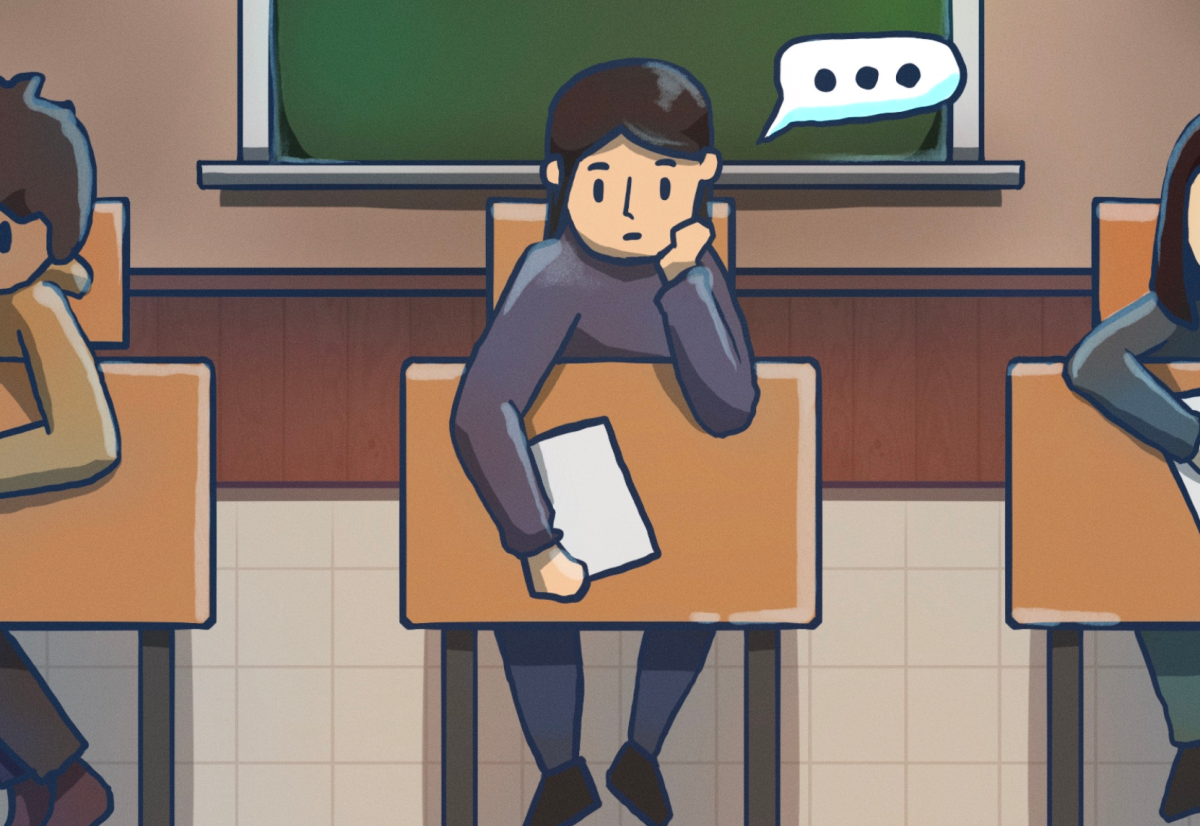Rows of eight-year-olds grip their pencils, following delicate dotted outlines, tracing continuous letters to form words and phrases. This image may evoke memories of elementary school for current high school students, but it is an increasingly uncommon experience for younger students today.
Now, many schools have halted instruction on writing structure and cursive. The MCPS curriculum covers basic English skills, but limits specific, required instruction on grammar, and no longer requires cursive for elementary students.
“For the past nine years I’ve been teaching, we have not formally taught grammar in our curriculum,” said Robin Berger, a third-grade teacher at Bradley Hills Elementary School.
Public school districts nationwide have gradually moved away from direct language-focused curriculums in favor of more “practical,” technology-based lessons. Technology-based education increases the amount of research and educational resources available to students allowing for an increase in a student’s writing capacity compared to traditional paper-and-pencil learning. However, this format of instruction may result in a decrease in students’ writing quality and other English skills.
Advanced Placement and National Writing Project teachers have reported a decline in students’ grammar and vocabulary skills, coinciding with increasing reliance on automated grammar and spelling checkers when writing. Not only are students struggling to perform at national reading standards, but 13-year-old students today are scoring at similar levels to their counterparts in the 1970s. Unlike today’s education system, the ’70s lacked government aid in education initiatives. Despite the difference in government aid, as of 2023, the average reading score on the Nation’s Report Card is 256, showing only a one-point increase from the average score in 1971. However, in 2012 when cursive was still a requirement, students scored significantly higher than their 2023 and 1971 counterparts.
To combat the growing national literacy crisis, MCPS should implement grammar and cursive lessons in elementary English curricula to reconnect students to the basis of language.
The International Education Studies emphasizes the importance of structured grammatical lessons where students learn the skills necessary for formal writing and communication. The belief that students will pick up grammar independently causes learning to plateau once they encounter challenges.
English teachers such as Alisa Chin have noticed students struggling with their writing abilities.
“Students are able to convey their ideas when speaking but may struggle when we start to deconstruct what they’re saying and putting it into writing,” Chin said.
MCPS English curriculums do not include mandatory structured lessons on formatting and organization. Instruction in English courses includes generalized grammar lessons but does not mandate instruction on clear and concise writing, according to MCPS program guides. Instead, these guides require common tasks such as research papers, analysis writing, and personal narratives, but English courses still lack lessons on proper formatting for these types of assignments.
“I gloss over grammar when teaching how to write essays to make sure students know how to structure their sentences and ideas,” Chin said. “I acknowledge that I could spend more time on it if the curriculum allowed more time.”
Learning cursive is an early task with a similar focus as grammar. The National Common Core curriculum has primarily defined academic proficiency at each grade level this millennium. They marked the first big shift, publishing new education standards in 2010 that excluded cursive and lessons on the formation of letters. However, studies have proven cursive to be an easy writing style for elementary-aged students because of its trademark fluid motions. Suppose students learn basic handwriting skills at a young age. This would give them a foundation upon which they can later improve, creating a personal connection to language and expressing their thoughts and ideas.
Students’ English struggles extend beyond the classroom too. Parents are also seeing their kids struggle with correct letter formation and general writing skills due to the lack of writing-focused classes at the elementary level.
Students who strongly understand language structure communicate effectively through speaking and writing. This ability helps them organize their thoughts and ideas to express themselves, a critical skill for future success. Importantly, taking the time to care about handwriting down to the letter creates a personal attachment and pride. Educators should work to implement more direct language-focused instruction in school curriculums to aid students’ writing abilities — or the disengagement from writing that students already feel will worsen.
















